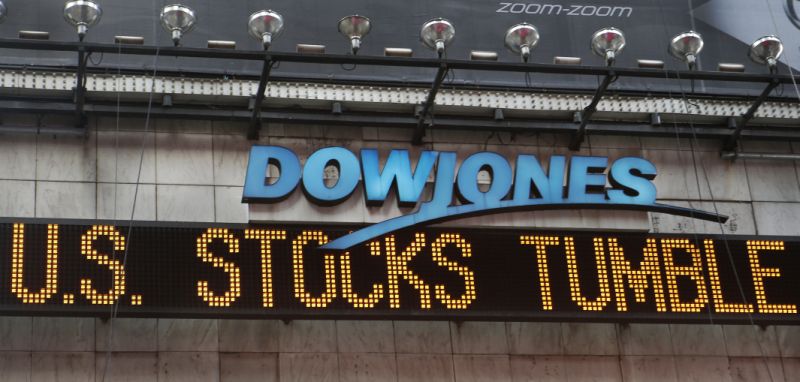
Stocks soared after Donald Trump won the presidency in 2016, as investors bet his tax-cutting and deregulatory agenda would boost corporate profits. They turned out to be right about that.
But harder-to-predict intangibles have undone much of the Trump bump, with stocks now poised to end the first full year of the Trump tax cuts down, rather than up. The reversal has been so sharp that the Trump stock market is now doing worse than the market did at the same point in President Obama’s first term:
Change in the S&P 500 from Election Day through Dec. 20, two years later:
Trump: 15.3%
Obama: 24%
Change in the S&P 500 from Inauguration Day through Dec. 19, one year later:
Trump: 9%
Obama: 46.7%
The Trump-Obama stock-market comparison is inherently meaningless, since many factors drive the direction of stocks, which are typically beyond the president’s control. Still, it’s fun, plus, it illustrates the dramatically different economies each president inherited, which in turn drive economic policy.
Obama took office at the tail end of a deep recession and financial crash. Employment worsened for nearly two years after he took office, but the stock market, which better anticipates the future, bottomed out just two months into Obama’s tenure. It then began a long rally which, technically, still continues today. The real economy was slow to recover under Obama, but stocks rebounded strongly and rose for almost all of Obama’s eight years in office.
Trump took office in the later stages of a recovery, which is why the unemployment rate has dropped to an unusually low 3.7% under Trump. That’s normal: unemployment is always lowest latest in a business cycle expansion. But stocks—which, again, tend to anticipate the future—are now declining, with the S&P 500 index down more than 6% this year as traders worry about a slowing economy and Trump policies that cut into profits.
Bad timing
Obama benefited from lucky timing. The recession that was underway when he took office was over by the time of his first reelection campaign, in 2012. Obama could tell voters he helped steer the nation out of a ditch. Employment was slowly recovering by the time of his reelection. The stock market had regained nearly all of its losses and was closing in on new highs.
Trump could be a victim of unlucky timing. The economy was strong in the first year of his presidency, with stocks going ever upward and unemployment going lower than some economists thought possible. But Trump’s second year might represent a peak, with growth slowing in coming years and stocks anticipating a downturn.
The S&P 500 is down 13% from its September high, with the market on track for its worst year since the crash of 2008. Investors are gloomy about the future, despite economic numbers that are still good. Sellers driving down stock prices might be excessively worried about disasters that never happen. Or, they might correctly intuit that a business expansion and bull market that are almost 10 years old are nearing their end.
For a president running for reelection, a late-term rally is better than an early-term one, because voters remember what happened lately, not what happened a few years ago. Trump boasted of stock-market gains during his first year in office, but lately he’s been placing blame for the downturn on the Federal Reserve and others. He shouldn’t have said anything at all, because four years is an awfully long time to sustain a stock-market rally that’s already going gray.


























